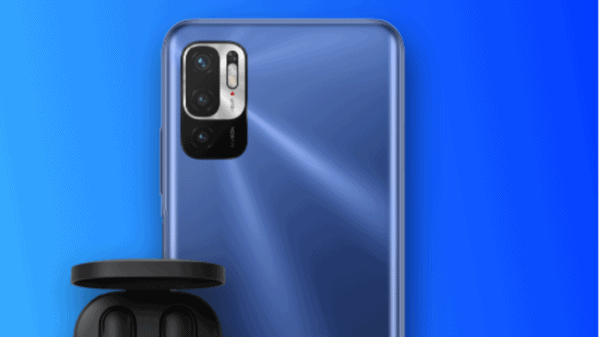Utilizing data is critical to user interface design. In fact, working without data just doesn’t make sense. There is no reason to design something based on your personal experiences, assumptions, and gut-feelings when you can utilize real data to help you design the website or mobile app you are working on.
Your website or mobile app can generate a wealth of data that is packed with insights into how people are finding your website, interacting with your content and progressing towards a purchase or other goal. This data should be leveraged to optimize your website or mobile app design and improve utility and usability for your users.
Every website or mobile app will have a different audience. These different groups of people will have different behaviors, needs, wants, limitations and different levels of tech savviness. Because of this, you will want to treat every project differently and design based on data specific to its user base. This is why designing based on your gut feelings and assumptions is not effective. Your personal opinions don’t matter when it comes to a user interface creating conversions; it is the opinions of its user base that matter.
While many designers can create designs that are beautiful and get a “wow” out of everyone on the team, this fancy new design might actually bring down conversation rates from the existing site. You need to perform A/B testing to see what your users think of this new design. Slick new designs sometimes don’t perform as well as the sites they replace and conversion rates drop.
Instead of trying to impress the internal team with your design skill, take the approach that the user is in charge and create designs that make your users happy. To do this you need to collect the data that lets you know what would make your users happy.
Personas
Start by getting to know your website or mobile apps’ users. You can review analytical data to get to know who your visitors are and how they use your website or mobile app. Data can be very helpful to create personas.
If you work at a larger company, your marketing team probably already has developed personas that represent your business’s customers. Marketing teams use personas to help them develop your brand’s voice and influence the tone of their messaging. Just like the marketing department, the web development or mobile app team should develop a set of user personas to help them make design decisions.
Get to know where people are coming from and what their digital behaviors are. Your website or mobile app’s analytical data is the key to getting to know who you are serving and how. Are your users focusing on specific functions? How do they navigate through your website or app? Find out which pages are most important for your users. Learn from their average time spent on a page to get to understand their content consumption, etc. Once you get to know who your users are and what they are doing, you can test different types of layouts that cater to these groups and their behaviors. Developing personas and designing with personas in mind can help you optimize your mobile app or website and create the best possible user experience for your specific audience.
Use Data to Drive Decision Making
When undertaking a new design for your website or mobile app you should have a set of measurable goals in mind. Select a set of metrics that can be quantified that help you understand where you are headed and the priorities for your designs. Good examples are goals related to changes in traffic, engagement, retention or conversions. Start by measuring how the current website or mobile app measures up. This gives you a baseline to measure against.
Then set target improvements for each of your metrics and design in a way to meet those goals. Examples include: increasing conversion rates, increasing overall order value, decreasing order completion time or reducing bounce rates. The goals you select should help drive your design choices. For example, if you want to increase conversion rates on a website focused on e-commerce, you would make sure to focus on reducing distractions and improving the process of a user moving from home page to category page to product page to shopping cart to check out.
Make sure you conduct A/B tests with new designs before going live to see if you have improved the process. By running A/B tests you can determine if your designs have had the desired effect before taking them live. This saves you time and money in the long run. After the new designs are live, keep an eye on your target metrics to develop a clear idea of the performance of your designs and to look for clues on how to improve them further.
It is important that you design with a goal in mind. Identify specific goals and direct design towards reaching those goals. By doing this you will not only make the best use of your time and efforts but you can also avoid getting tied up in discussions that in reality just come down to personal preferences and tastes.
Analyze the Success of Content
The success of your mobile app or website depends on the effectiveness of your content. As you review your analytics, check and see if people are staying long enough to consume the content you have prepared. Does the average amount of time they are spending on given screens fit the amount of content you have?
Keep in mind that on a well-designed product page it might only take about 20 seconds to read and make a decision. If your users are spending significantly less time that this on your product pages you should look at improving your content. If your content is engaging, users are more likely to stick around and read and take the desired action. Additionally, remember that the images you choose can impact content consumption. In testing, it has been found that the right image can improve conversions by two to three times.
When it comes to your content, you have the opportunity for testing and improvement. But beyond just looking at the copy itself, think about how your content is presented from a design perspective. Different layouts and content structures can improve the usability and increase consumption of your content. You want to select an arrangement where the data from you A/B testing indicates you have created a configuration that is comfortable for your visitors.
Samella Garcia works as an Integration Manager for Vanity Point. She has 8 years of experience developing mobile applications and web sites that focus on UX. Samella has a passion for user experience projects, coding, digital technology and hiking. LinkedIn Profile | Facebook Profile

1 Comment
Leave a Reply
Cancel reply
Leave a Reply
This site uses Akismet to reduce spam. Learn how your comment data is processed.






















































































































































































Samella
December 15, 2016 at 11:49 am
Great article, it’s very important analyze the work with the analytics, it’s a free tool.
Thanks Samella.